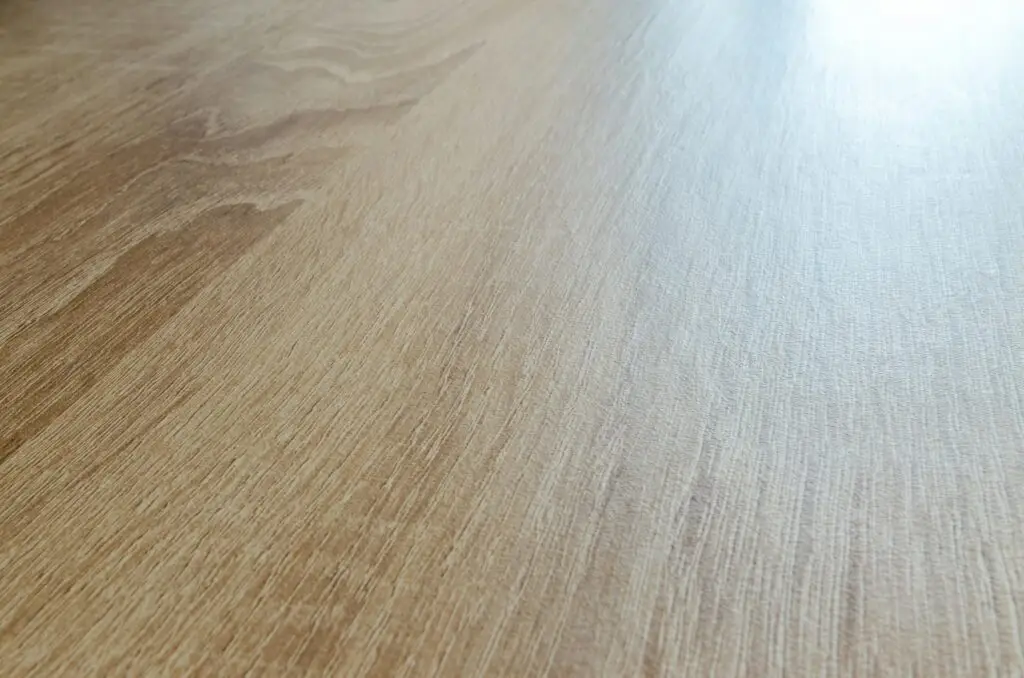Choosing the right finish for your hardwood floors is a critical decision that impacts not only the aesthetic appeal of your home but also the practical aspects of maintenance and durability. Among the most popular contemporary choices are satin and matte finishes. While both offer a more subdued look than high-gloss options, they have distinct characteristics that cater to different preferences and lifestyles. Understanding these differences is key to selecting the finish that perfectly complements your home and personal style.

Main differences between satin and matte finishes
The fundamental distinction between satin and matte finishes lies in their level of reflectivity, or sheen. This is determined by the amount of flattening agents incorporated into the topcoat.
- Satin Finish:
- Reflectivity: Offers a low to medium sheen, reflecting a subtle, soft glow. It’s often described as having an eggshell-like appearance.
- Appearance: Provides a classic, elegant, and slightly warm look that enhances the wood grain without being overly shiny. It strikes a balance between showcasing the wood and offering a modest amount of reflection.
- Gloss Level: Typically ranges from to 40% gloss.
- Matte Finish:
- Reflectivity: Has a very low to no sheen, appearing flat and non-reflective. It absorbs or diffuses light rather than bouncing it back.
- Appearance: Creates a modern, natural, and understated look, mimicking the appearance of raw or lightly oiled wood. It emphasizes the wood’s texture and inherent beauty.
- Gloss Level: Generally falls between 0% and 20% gloss.
In essence, satin provides a subtle luster, while matte aims for an almost invisible, natural aesthetic.
Pros and cons of satin finish wood floors
Satin remains a highly popular choice due to its harmonious blend of classic appeal and practical benefits.
Pros of satin finish
- Versatile Aesthetic: Offers a timeless elegance that complements a wide range of interior design styles, from traditional to transitional and modern.
- Subtle Glow: Provides a soft, inviting sheen that enhances the beauty of the wood without being overwhelming or creating excessive glare.
- Good at Hiding Imperfections: While not as effective as matte, satin finishes do a respectable job of camouflaging minor scratches, scuffs, and everyday dust compared to glossier options. The diffused light helps to blend these imperfections.
- Easy to Clean: The smooth surface is relatively easy to clean and maintain, and the subtle sheen doesn’t highlight streaks as much as high-gloss finishes.
- Popular and Trendy: It’s a widely accepted and often recommended finish by flooring professionals and interior designers.
Cons of satin finish
- Shows More Than Matte: While good at hiding some imperfections, it will still show more dust, smudges, and minor scratches than a true matte finish due to its higher reflectivity.
- Can Appear Less “Natural”: For those seeking a raw, organic wood look, satin might still appear a bit too “finished” or shiny.
- Requires Even Application: Like all finishes, it needs careful application to avoid lap lines or inconsistencies that can be noticeable under certain lighting.
Pros and cons of matte finish wood floors
Matte finishes have seen a surge in popularity, particularly appealing to those who favor contemporary and minimalist designs.
Pros of matte finish
- Exceptional at Hiding Imperfections: This is its strongest advantage. The non-reflective surface is incredibly effective at disguising scratches, scuffs, dust, pet paw prints, and everyday wear and tear, making it ideal for busy households.
- Modern and Natural Aesthetic: Provides a very contemporary, sophisticated, and authentic look. It allows the natural grain and character of the wood to be the star, creating a warm, organic ambiance.
- No Glare: Eliminates harsh glare from natural light or overhead fixtures, contributing to a softer and more comfortable visual environment.
- Visually Low Maintenance: Because it hides so many daily imperfections, matte floors can appear cleaner for longer, reducing the perceived need for constant cleaning.
- Enhanced Texture: The lack of shine can make the wood’s natural texture feel more pronounced and inviting.
Cons of matte finish
- Can Appear Dull if Neglected: While it hides surface dirt, a true build-up of grime can make the floor look lifeless if not cleaned regularly.
- More Prone to Showing Streaks from Cleaning (If Not Done Properly): Because there’s no shine to distract, any streaks left by cleaning solutions or water can be more apparent on a matte finish. Proper cleaning techniques and products are essential.
- Less “Dramatic” Impact: If you desire a floor that “pops” or adds a sense of grandeur through reflection, a matte finish might feel too understated or flat.
- Repairs Can Be Tricky: While minor scuffs blend in, attempting spot repairs on deeper damage can be challenging to blend seamlessly due to the lack of sheen.
Factors to consider before choosing a finish
To make the best decision between satin and matte, evaluate these key factors:
- Lifestyle and Traffic:
- High-Traffic Areas (e.g., living rooms, kitchens, homes with children/pets): Matte is highly recommended due to its superior ability to hide scratches and dust, making your floors look better between cleanings.
- Low-Traffic Areas (e.g., formal dining rooms, bedrooms): Both satin and matte are excellent choices. Your preference for shine or natural look will be the deciding factor.
- Desired Aesthetic:
- Modern, Minimalist, Organic, or Farmhouse: Matte finishes perfectly align with these styles, emphasizing natural materials and understated beauty.
- Traditional, Transitional, or Classic: Satin finishes offer that timeless, elegant look with a subtle sheen that has been popular for decades.
- Room Size and Lighting:
- Rooms with Abundant Natural Light: Matte finishes are excellent for reducing glare in sunny rooms, creating a softer ambiance.
- Rooms with Less Light: While matte still works, satin might add a bit more subtle light reflection to brighten the space slightly without being overly shiny.
- Tolerance for Imperfections:
- If you prefer a floor that camouflages everyday wear and tear and requires less visual fuss, matte is the clear winner.
- If you’re okay with seeing a bit more of the daily life on your floors but still want a subdued look, satin is a good compromise.
- Maintenance Expectations:
- Both finishes require regular cleaning. However, matte floors offer a visual advantage by making minor imperfections less noticeable, potentially reducing the perceived frequency of cleaning. Satin floors, while easy to clean, will show more subtle marks.
Both satin and matte finishes are fantastic choices for hardwood floors, moving away from the highly reflective surfaces of the past. Your ultimate decision should balance your personal aesthetic preference with the practical demands of your household and the amount of daily maintenance you’re comfortable with. If a natural, forgiving, and contemporary look is your priority, matte is likely your best bet. If you desire a classic, subtle sheen that offers good wear concealment without going fully flat, satin will be an excellent choice.
